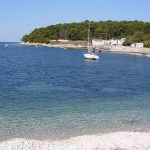Is tap water safe to drink? Absolutely! Unless of course, you read The Daily Mail on July 11, 2016.
Back in 2007 I visited the exhibition Water: H20=Life in New York’s Museum of Natural History. The whole event was sensational, and among other things I remember that all over this museum water taps were placed, with a note that it’s perfectly safe to drink water coming from the city’s water pipes, in spite of the reputation. I tried it, and yes, I’m still alive and kicking. This memory came back to me after reading pretty much ridiculous story in The Daily Mail these days, with a map of countries in which it’s safe or not safe to drink tap water. To be more precise, the map was picked by the tabloid from Citybase Apartments, an online service for renting upscale tourist apartments, mostly in the United Kingdom. The Daily Mail, of course, is not really a source anyone should pay much attention, but the number of its readers is huge, and so is its impact. When they publish something, it reaches a huge number of readers. Thus, it’s really completely ridiculous to put Croatia on the list of countries where it’s not safe to drink tap water. Except if you are a proud member of bottled water industry.
According to Croatian regulations, water is controlled by local water-suppliers, and then by the Agency of Public Health on county and national levels. I really can’t remember any significant incident with tap water. Controls are regular, and any incident goes public at once. Furthermore, in most of Croatian towns, tap water comes from river sources, and in some areas – Split among others – it’s considered excellent. If not, it would be hard to believe that most of the sources Googled with the phrase “drinking tap water in Croatia” claim that it’s perfectly safe to fill up a glass from a tap. Of course, the same regulations and standard don’t apply on water coming from cisterns or wells. But that’s a completely different story.
Citybase mentioned a few sources for its claims, and even they are questionable when it comes to Croatia. American CDC, for example, claims the same as Citybase’s map, but then most of the articles on this issue say that it’s not really true, because writers had an experience of drinking tap water in Croatia. This country has its flaws, but there are regulations it has to follow, and it does follow them.
As a tour guide, I always tell my guests that the easiest way to waste money in Split is to drink only bottled water. After all, it’s more expensive than milk, and for understandable reasons; if you are silly enough to buy bottled water in the country with a millenial tradition of water supplying from rivers which are almost always unpolluted, that you should pay for it. Of course, there are situations when it’s reasonable to buy it, like on boats, or on hiking trips, or when visiting some unpopulated areas. Otherwise, in cities, just re-fill your bottle on any of public fountains, for Split all of them are listed on this map.
For more on this story and how it was reported in the Croatian media, click here.









